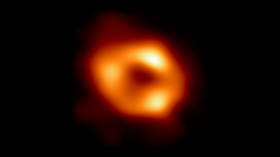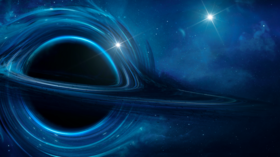Black hole in our galaxy ‘not dormant’ – study

Sagittarius A*, the supermassive black hole that sits as the centerpeice to our Milky Way galaxy and was previously considered dormant, briefly sprang back to life at the end of the 1800s, according to the findings of a study just published in Nature magazine.
The black hole, which is around four million times more massive than the Sun and located about 27,000 light years from Earth, awoke from its prolonged slumber about 200 years ago, the study says. The celestial body spent around a year swallowing various cosmic objects before once again returning to a state of dormancy, according to researchers.
“Imagine a bear going into hibernation after devouring everything around it,” Frederic Marin, an author of the study, said via AFP on Saturday.
During this late-19th-century phase of activity, the black hole was “at least a million times brighter than it is today,” Marin added. The centuries-old activity was observed by scientists, who noted that nearby galactic molecular clouds began emitting x-ray light so dramatic that it’s as if “a single glowworm hidden in a forest suddenly became as bright as the Sun,” French researchers CNRS said.
Astronomers tracked this x-ray light with the use of NASA’s Imaging X-ray Polarimetry Explorer (IXPE) and found that the clues pointed directly to Sagittarius A* – which Marin said had “emitted an echo of its past activity, which we managed to observe for the first time.”
But, while scientists are fascinated by the findings of the study, the reasons for the black hole’s re-emergence remain a mystery. One prevalent hypothesis is that a star or cloud of gas may have strayed too close, waking Sagittarius A* from its dormant state. Researchers hope that the study can provide crucial insights into what triggers black holes to emerge from periods of dormancy to activity.
Last year, astronomers released online the first-ever images taken of the black hole – or, more specifically, the glowing ring of gas that surrounds it and confirms its presence.
A black hole is an area of spacetime which has gravity so strong that nothing, not even light, can emerge from it. They are formed when the center of a very massive star collapses in upon itself at the end of its life.













